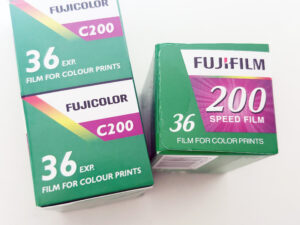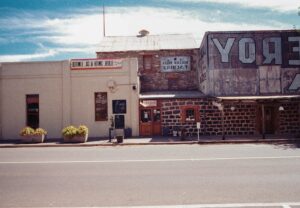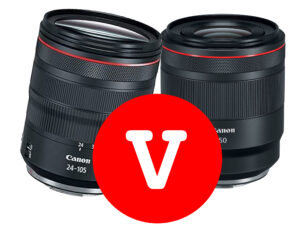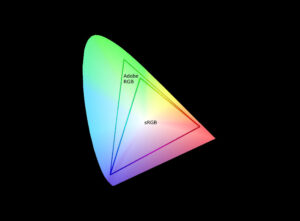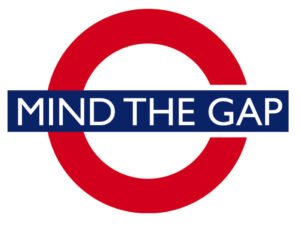In the competitive landscape of today’s business world, understanding the marketing and sales funnel is crucial for any marketer aiming to succeed. The marketing funnel is not just a buzzword; it’s a strategic tool that helps marketers guide potential customers from awareness to conversion and beyond. By comprehending each stage of the funnel and planning marketing communications and promotions accordingly, businesses can maximize their reach, engage their audience effectively, and drive long-term loyalty. In this blog post, we will delve deep into the marketing and sales funnel, explain the importance of each stage, and provide practical examples of promotion and communication tactics that can be used at each step.
What is the Marketing and Sales Funnel?
The marketing and sales funnel is a model that represents the customer journey from the moment they become aware of a brand to the point of purchase and beyond. It’s called a “funnel” because, like a funnel, it narrows down as you move through each stage. At the top, you have a large number of potential customers, but as they progress through the funnel, only a smaller number will convert into actual buyers.
Why is the Marketing Funnel Important?
Understanding the marketing funnel is essential because it helps marketers create targeted strategies for each stage of the customer journey. By recognizing where potential customers are in the funnel, marketers can tailor their communications and promotions to meet their needs and encourage them to move further down the funnel. This approach ensures that marketing efforts are efficient and effective, leading to higher conversion rates and long-term customer loyalty.
The Stages of the Marketing and Sales Funnel
1. Awareness Stage
Understanding the Awareness Stage
The awareness stage is the top of the funnel, where potential customers first learn about your brand or product. At this point, they may not yet have a need for your product or service, but they become aware that you exist. This stage is crucial because if customers don’t know about your brand, they can’t move further down the funnel.
Promotion and Communication Tactics
- Content Marketing: Blog posts, infographics, videos, and social media posts are all effective ways to create awareness. For example, a well-written blog post optimized for “marketing funnel” and “marketing sales funnel” can attract potential customers searching for information on these topics.
- Social Media Advertising: Platforms like Facebook, Instagram, and LinkedIn offer targeted advertising options that can help you reach your ideal audience.
- SEO Optimization: Ensure your website is optimized for search engines to increase visibility when potential customers search for relevant terms.
Why It’s Important
Without awareness, the rest of the funnel is irrelevant. If people don’t know about your product or service, they won’t consider buying it. By focusing on this stage, you can cast a wide net and attract a large pool of potential customers.
2. Interest Stage
Understanding the Interest Stage
Once potential customers are aware of your brand, the next step is to spark their interest. At this stage, they are beginning to explore your offerings and are interested in learning more about what you have to offer. They might compare your products or services with competitors and evaluate the benefits.
Promotion and Communication Tactics
- Email Marketing: Sending personalized emails that highlight the benefits of your product or service can keep potential customers engaged. For example, a series of emails explaining how your product addresses their specific pain points can nurture their interest.
- Webinars and Online Demos: Hosting webinars or providing free demos can help educate your audience and showcase the value of your offerings.
- Lead Magnets: Offering valuable resources like eBooks, whitepapers, or free trials in exchange for contact information can help you capture leads and continue the conversation.
Why It’s Important
At this stage, it’s crucial to keep potential customers engaged and interested. If they lose interest, they may drop out of the funnel. By providing valuable information and addressing their needs, you can keep them moving towards the next stage.
3. Consideration Stage
Understanding the Consideration Stage
In the consideration stage, potential customers are evaluating their options and considering whether to make a purchase. They are likely comparing your product or service with those of your competitors and weighing the pros and cons.
Promotion and Communication Tactics
- Case Studies and Testimonials: Sharing success stories from existing customers can help build trust and demonstrate the value of your product or service. For example, a case study that highlights how a business achieved success using your product can be persuasive.
- Comparison Guides: Creating comparison guides that show how your product or service stacks up against competitors can help potential customers make an informed decision.
- Retargeting Ads: Retargeting ads can remind potential customers of your product as they continue their research, keeping your brand top of mind.
Why It’s Important
During the consideration stage, potential customers are close to making a decision. Your goal is to provide them with the information they need to choose your product or service over others. By addressing their concerns and highlighting your unique selling points, you can increase the likelihood of conversion.
4. Intent Stage
Understanding the Intent Stage
At the intent stage, potential customers have shown a clear interest in making a purchase. They might add items to their cart, sign up for a free trial, or request a quote. This stage is where they are on the brink of converting into actual buyers.
Promotion and Communication Tactics
- Special Offers and Discounts: Offering a limited-time discount or promotion can nudge potential customers to make a purchase. For example, a “10% off your first purchase” offer can create urgency.
- Abandoned Cart Emails: If a potential customer adds items to their cart but doesn’t complete the purchase, an abandoned cart email can serve as a reminder and encourage them to finalize the transaction.
- Personalized Recommendations: Using data to offer personalized product recommendations based on the customer’s browsing history can increase the likelihood of conversion.
Why It’s Important
The intent stage is where potential customers are closest to making a purchase. By offering incentives and addressing any last-minute hesitations, you can convert them into paying customers.
5. Purchase Stage
Understanding the Purchase Stage
The purchase stage is where the actual transaction occurs. The customer has decided to buy your product or service and completes the purchase. This stage is critical, as it’s the culmination of all your marketing efforts.
Promotion and Communication Tactics
- Seamless Checkout Process: Ensure that the checkout process is smooth and easy to prevent cart abandonment. For example, offering multiple payment options and a guest checkout can reduce friction.
- Thank You Emails: Sending a personalized thank you email after a purchase can help reinforce the customer’s decision and lay the groundwork for future loyalty.
- Cross-Sell and Upsell: Suggesting related products or premium versions of the purchased product can increase the value of the transaction.
Why It’s Important
The purchase stage is where your efforts pay off, but it’s not the end of the customer journey. Ensuring a positive experience at this stage can lead to repeat business and referrals.
6. Post-Purchase and Loyalty Stage
Understanding the Post-Purchase and Loyalty Stage
The post-purchase and loyalty stage is where you work to retain customers and encourage repeat purchases. A satisfied customer is more likely to become a loyal advocate for your brand, leading to long-term success.
Promotion and Communication Tactics
- Loyalty and Rewards Programs: Implementing a loyalty program that rewards customers for repeat purchases can encourage long-term loyalty. For example, offering points for every purchase that can be redeemed for discounts can incentivize repeat business.
- Customer Feedback Surveys: Asking for feedback after a purchase shows that you value the customer’s opinion and can provide insights for improving your products or services.
- Referral Programs: Encouraging satisfied customers to refer friends and family through a referral program can help you acquire new customers at a lower cost.
Why It’s Important
Retaining customers is more cost-effective than acquiring new ones. By focusing on customer loyalty, you can build a strong base of repeat customers who not only continue to purchase from you but also become advocates for your brand.
Integrating the Funnel into Your Broader Marketing Strategy
Understanding the marketing and sales funnel is just the beginning. To truly succeed, you need to integrate the funnel into your broader marketing strategy. This means aligning your marketing communications and promotions with each stage of the funnel and ensuring that every touchpoint is designed to move potential customers closer to conversion.
Consistent Messaging Across Channels
Ensure that your messaging is consistent across all channels, from social media and email marketing to paid advertising and content marketing. Consistent messaging helps reinforce your brand identity and builds trust with your audience.
Data-Driven Decisions
Use data to track the performance of your marketing efforts at each stage of the funnel. By analyzing metrics such as conversion rates, click-through rates, and customer lifetime value, you can identify areas for improvement and optimize your strategies accordingly.
Continuous Optimization
The marketing funnel is not static. It’s important to continuously test and optimize your strategies to ensure that they are effective. A/B testing different promotions, messaging, and tactics can help you identify what resonates with your audience and drives the best results.
Conclusion
The marketing and sales funnel is a powerful tool that, when understood and applied correctly, can lead to successful marketing outcomes. By recognizing the importance of each stage and tailoring your promotions and communications to meet the needs of potential customers at each point in the funnel, you can maximize your reach, increase conversions, and build long-term loyalty. Remember, the journey doesn’t end at the purchase stage—by focusing on post-purchase strategies like loyalty programs, you can turn one-time buyers into lifelong customers.
By implementing these strategies, you’ll be well on your way to mastering the marketing funnel and achieving success in your marketing efforts.












